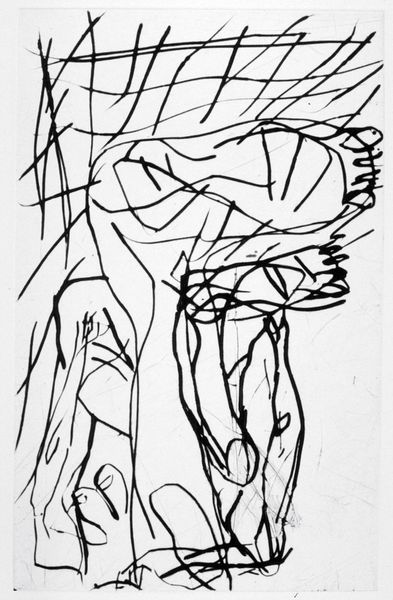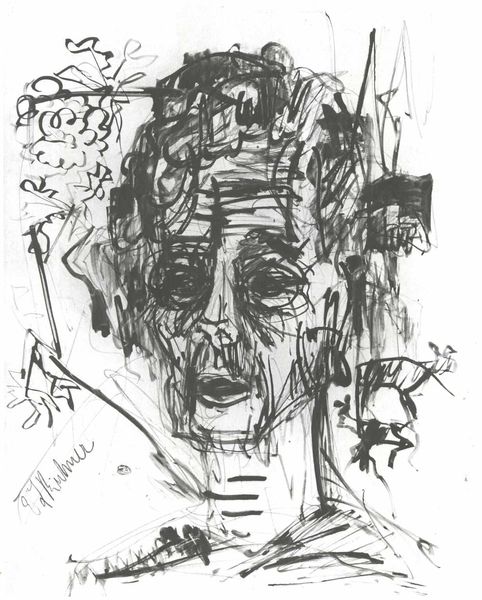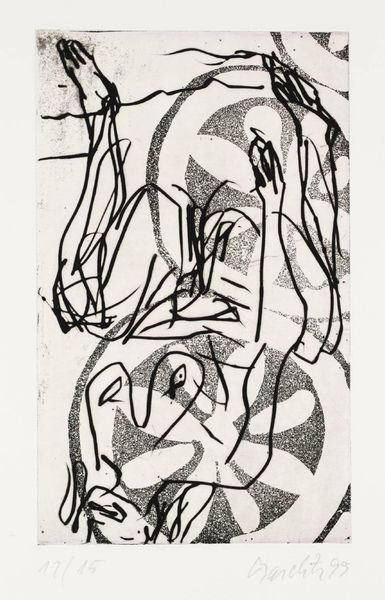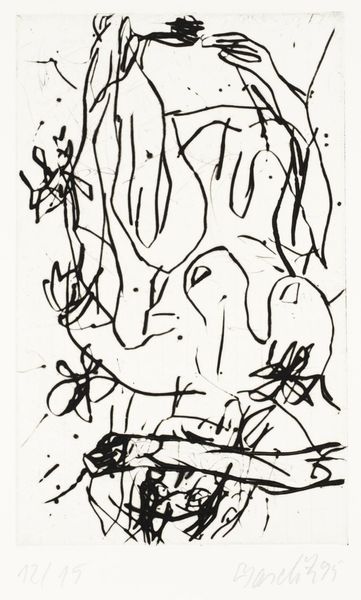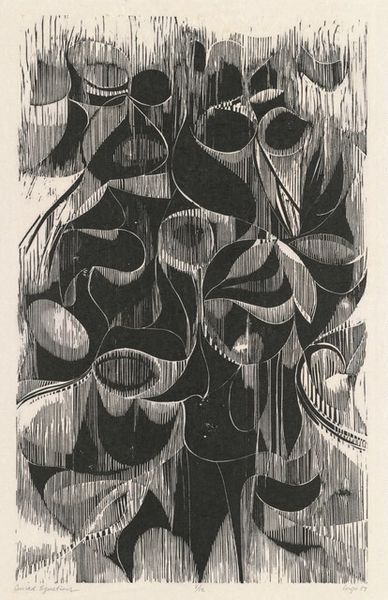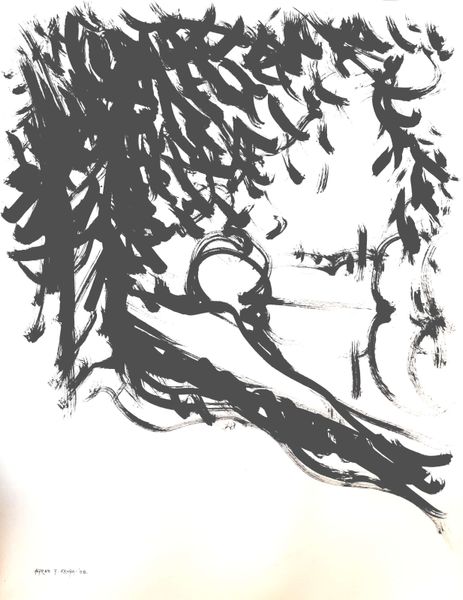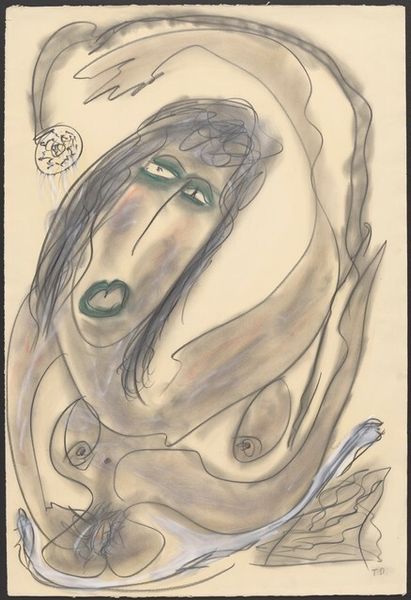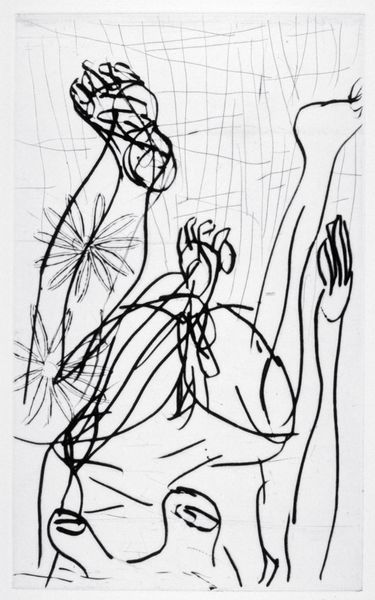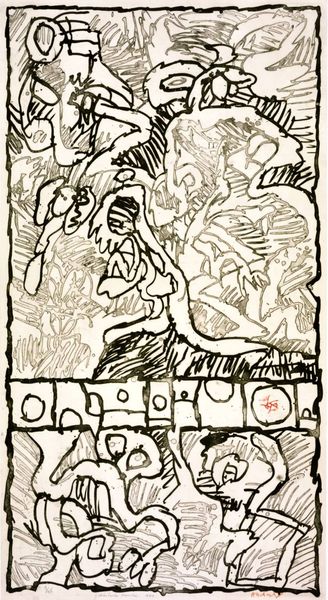
drawing, graphite, charcoal
#
drawing
#
pen illustration
#
figuration
#
line art
#
abstraction
#
line
#
graphite
#
charcoal
Dimensions: sheet: 90.49 × 62.87 cm (35 5/8 × 24 3/4 in.)
Copyright: National Gallery of Art: CC0 1.0
Editor: This is Thornton Dial's "A Shadow of Life" from 1994, created with graphite, charcoal, and pen. The overlapping lines and ambiguous forms give it a restless, almost tormented feel. How do you interpret this work? Curator: This drawing strikes me as an exploration of layered realities, particularly as they relate to African American experience in the late 20th century. Considering Dial’s background, steeped in the Jim Crow South, how might we read these shadows as representing the lingering effects of systemic oppression, shaping identity and lived experience? Do you see how the lines seem to struggle to define a concrete form? Editor: I see what you mean, it's like the figure is constantly shifting, never fully realized. Almost like an echo. Curator: Exactly. Think about the concept of double consciousness, theorized by W.E.B. Du Bois. Could this be a visual representation of that internal struggle, the sense of always viewing oneself through the eyes of others, fragmented and incomplete? Where do you see that reflected most vividly in the drawing itself? Editor: I guess in the way the facial features aren't clearly defined, like they're fading or being erased. Curator: And those marks around the edge—are they constraints, a blurring, a kind of noise, or a field of energy surrounding this core being? The artwork becomes a space to engage a visual language for what is unseen but heavily felt. It urges us to consider historical contexts while we re-evaluate individual perception. Editor: I never considered how the composition itself could speak to social issues like that. It really does change how you see the whole piece. Curator: It’s about understanding art not just as aesthetics, but as a powerful commentary, shaped by the forces of history and identity, that urges conversations with those who see the piece, inviting participation within critical reflections.
Comments
No comments
Be the first to comment and join the conversation on the ultimate creative platform.
